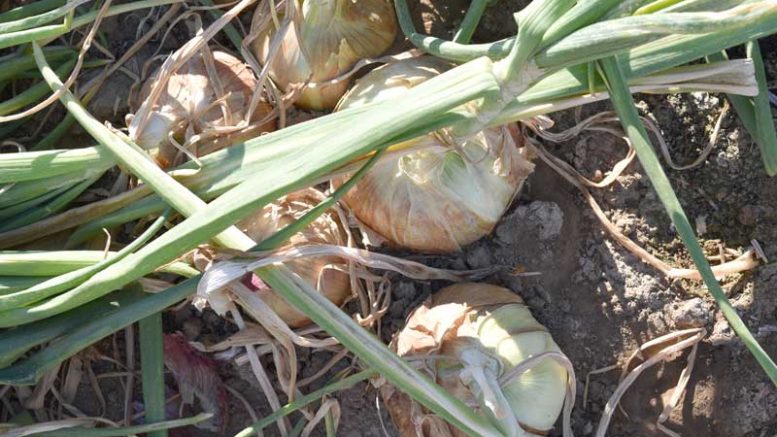The Pacific Northwest Pest Alert Network is reminding onion producers that the Malheur County Onion Maggot Control order remains in effect until July 1. This order mandates the proper disposal or treatment of culls, including volunteers, to protect this season’s onion crop. If you have questions or concerns regarding the Order, please contact Casey Prentiss (see his contact below).
Malheur County Onion Maggot Control Order
The Onion Maggot Control Order 603-052-0360 for Malheur County requires that all cull or waste onions in Malheur County have to be disposed of by a method approved of within this control order prior to March 15th each year. The objective of the control order is to protect the onion industry from the Onion Maggot pest.
Please keep in mind that the cull onion disposal order remains in effect and will be enforced through July 1. All cull or waste onions are required to be disposed of, plowed under and covered by 12 inches of onion-free soil by March 15th at the latest. Additionally, for cull onions produced after the March 15 deadline until July 1 the Control Order permits only a maximum of one week for proper disposal.
Culls include “volunteer” onions growing in last season’s fields, which may be planted to another crop at this time. Because the Control Order remains in effect until July 1, volunteer onions still need to be disposed of or treated properly.
The Onion Maggot Control Order offers several disposal options:
A) Disposal by covering in a dump site approved by the Oregon Department of Environmental
Quality (DEQ). Culls and onion debris shall be dumped and covered by at least 12 inches of onion-free soil by March 15 each year;
(B) Disposal by animal feeding: Culls and onion debris shall be completely removed from feeding areas by March 15 and buried under 12 inches of onion-free soil. Onions tramped into the soil so they cannot be removed shall be plowed to a depth of 12 inches;
(C) Disposal by chopping or shredding: Chopped or shredded onion debris that is incapable of
sprouting may be returned to the field at the DEQ-approved tonnage rate which is no higher than 80 tons per acre and plowed to a depth where no onion parts are exposed on the surface;
(D) Composting: All onion debris shall be incorporated into the compost bed and completely covered by 12 inches of onion-free soil;
(E) Disposal of residue in onion producing fields: Commercial onion fields where sort out bulbs are left at harvest shall be disked to destroy the bulbs and shall be plowed to a depth of at least 12 inches by March 15 each year. Seed bulbs shall be disposed of in the same manner following the last harvest;
(F) Culls may be treated with an EPA-labeled insecticide. David Priebe of the ODA Pesticides Program has provided a list of insecticides that can be sprayed on wheat and/or sugar beet fields for onion maggot control. Please see the link below.
Please contact the Ontario ODA office at 541-889-5274 or Casey Prentiss directly at 541-212-3361 cprentiss@oda.state.or.us

